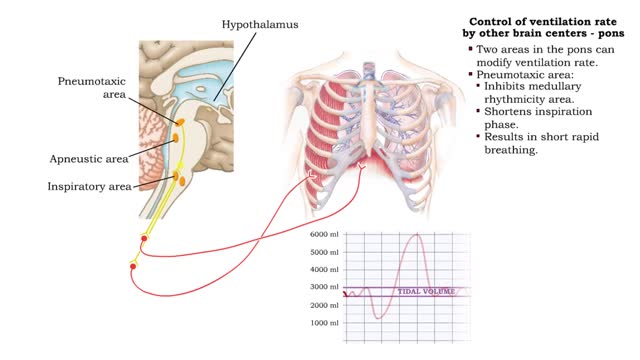Olfaction. or the sense of smell
By: HWC
Date Uploaded: 10/27/2021
Tags: Olfaction the sense of smell water-soluble volatile chemical substances odorants nasal cavity epithelium tissue olfactory receptors. ciliated ending Odorgnt molecules action potential axon olfactory bulbs cerebral cortex of the brain olfactory cortex G protein enzyme adenylyl cyclase CAMP from ATP Cyclic AMP plasma membrane
Do you ever wonder how you can distinguish thousands of different odors? Olfaction. or the sense of smell, is used by all mammals to navigate, find food, and even find mates. We have millions of olfactory receptors for smelling in our nose. These receptor neurons bind water-soluble or volatile chemical substances in the air called odorants. A But, the nose is just a channel for these odorants to find their way to the upper part of the nasal cavity where smelling really occurs. So, how do you smell? Let's trace the path of an odorant as it enters the human nose. Let's begin with the aroma of freshly arranged flowers entering the nose. An odorant molecule from the flower makes its way to the upper part of the nasal cavity containing a patch of epithelium tissue, with anywhere from five to a hundred million olfactory receptors. Notice that each receptor is a neuron with a ciliated ending. bathed in mucus inside the nose. Odorgnt molecules make their way to these ciliated endings and stimulate the olfactory receptors. The olfactory receptors fire an action potential, initiating a nerve impulse. The more odorant molecules present, the stronger the action potential. Now notice that the other end of the receptor. the axon. passes through a bony plate and ends directly in the brain. So, the nerve impulse can travel to one of the two olfactory bulbs in the cerebral cortex of the brain. Have you ever smelled something that brings back a memory? As with many sensory pathways, the olfactory bulb transmits the impulse to the olfactory cortex within the limbic system of the brain, which integrates it with emotions and memories. Let's now look at the chemical basis of smell. How does smell occur at the molecular level? Let's go back to the ciliated part of the olfactory receptor cell. Recall that an odorant binds to the receptors found here that end in the mucus layer. This first messenger, the odorant. triggers a cell transduction pathway, beginning with a G protein being activated. G proteins are the secondary messengers. This then stimulates the enzyme adenylyl cyclase to produce CAMP from ATP. Cyclic AMP opens channels in the plasma membrane that are permeable to the cations. sodium and calcium. The flow of cations into the receptor causes depolarization and initiates an action potential along the olfactory nerve. So, a chemical signal is transferred into an electrical impulse that travels along the olfactory nerve, sending information to the brain.
Add To
You must login to add videos to your playlists.
Advertisement












Comments
0 Comments total
Sign In to post comments.
No comments have been posted for this video yet.